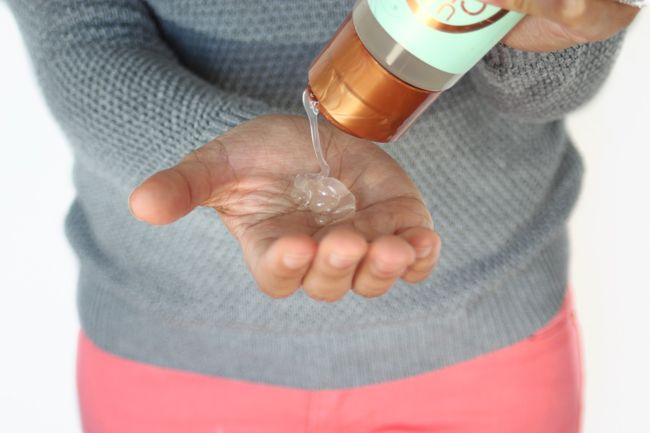
The journey of transitioning from relaxed to natural hair comes with no shortage of ups and downs. Though the end result is extremely rewarding, there are many challenges, one being to safely enhance your curls with a gel. Breakage and definition are two top issues transitioning curlies deal with. And the list for why your hair is in this state goes beyond heat damage. You may choose to transition after a bad relaxer, or constant tight protective styles, a DIY gone wrong, horrible bleach dye job, or skipping one too many trims.
Contrary to popular belief, not all gels are bad for natural and transitioning hair.
If you are one of those curly girls who like to wear your hair straight more frequently (a few times a week”>, you’re not in much danger because to be honest, your hair likely doesn’t show its true texture and a looser, heat damaged pattern is what you have grown accustomed to.
Using a gel on damaged hair doesn’t have to be scary
For naturals who choose to wear their curly or coily hair out more than they do in straightened or other manipulated styles, gel can be a scary thing. And if you are effectively practicing a full-on healthy transition into natural from your previous damage, skipping this styling product comes easier (and for good reason”>. But there are good curl enhancing gels out there that offer more good than bad. For example, U R Curly’s Loose and Tight Curl Enhancers are made with previously damaged hair in mind. Curl enhancing gels like these Curl Enhancers will not make the curly pattern tighter, but they will work to enhance a person’s natural curl pattern by providing the necessary moisture it needs to retain the curl.
How to find the right “transitioning gel”
Contrary to popular belief, not all hair gels are bad for natural and transitioning hair. In addition to curl enhancement and frizz control, they can also act as a great layer to your healthy, curly hair product cocktail. Yours should be:
- Alcohol free. Not all (but many”> alcohols are extremely drying and leave casts on the hair that make it difficult to wash out easily and other moisturizing products to penetrate.
- Strengthening. Hydrolyzed proteins like soy will mend your hair fibers together, making them more durable and stronger for styling. If you find a gel with this in it, you have come across a gem.
- Nourishing. Ingredients like honey, soy, and aloe are humectants, meaning that they draw moisture from the atmosphere into your hair.
- Protective. Glycerin is a protective barrier from letting moisture escape your hair. It locks in any humectant ingredients from your gel and lets light reflect off the hair shaft to make your curls appear more controlled, uniform, and frizz-free.
Rules for using a curl enhancing gel on transitioning hair
1. Scrunch the product with water. H20 is your ultimate hydrator and works to activate any useful ingredient in your curl enhancing gel. Focus your attention on the point of demarcation between relaxed and natural if you are transitioning. Because of the sensitivity of that line, more enhancer should be applied to it, in order to make sure the hair remains supple and doesn’t become dry and brittle which can lead to breakage.
2. Use a microfiber towel to scrunch. If you need to refresh your curls in a public bathroom while on the go, use paper towels–not the hand dryer.
3. Wash your hair first. In addition to the nourishing ingredients your gel should have, co-wash before using one to ensure that you’re working with literally a clean slate of hair before piling on another styler.
4. Don’t touch your hair after styling. After applying your curl enhancing gel to freshly washed hair, let it air dry. If you are in a hurry, use a diffuser on the low setting, focusing on the roots. Figure out which side of your head you want your curls to fall on, then leave them alone.
[prodmod]This post is sponsored by UR Curly.
